VENICE ART BIENNALE: FINISSAGE
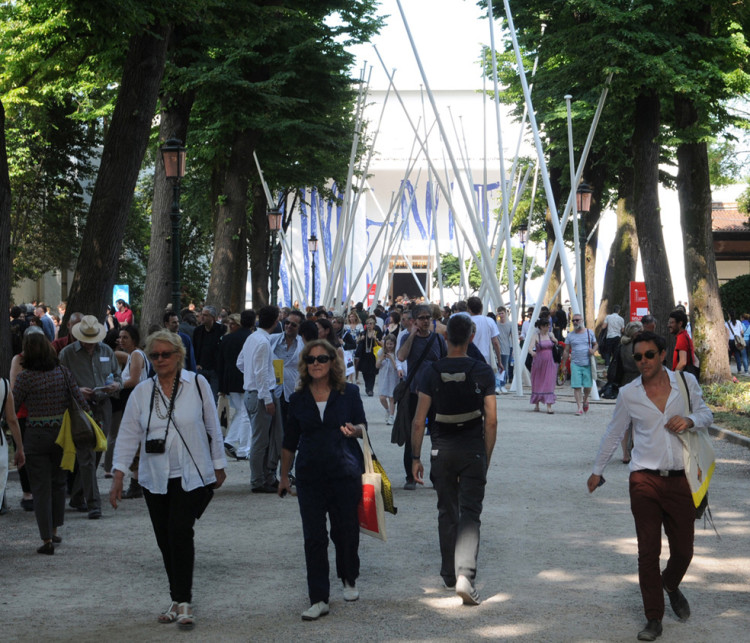
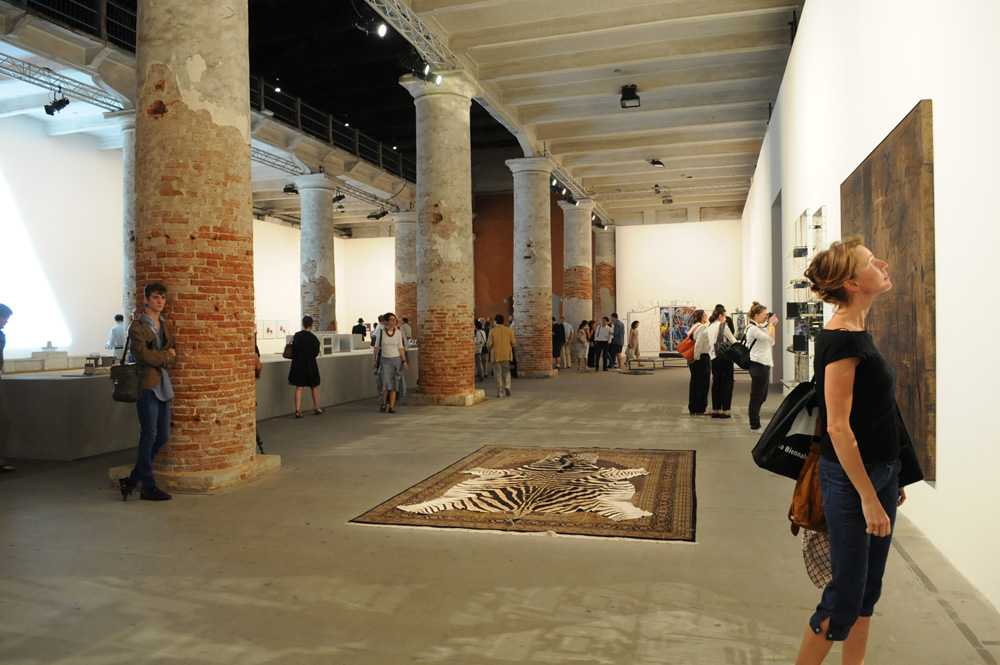
54th International Art Exhibition – la Biennale di Venezia
Saturday 26th and Sunday 27th of November Let’s talk about us in the last three events of Meetings on Art
Saturday, November 26th, 2011 – Teatro alle Tese, Arsenale
2.30pm – 4.30pm
Let’s talk about us
Session 1- Blockbuster or Betablocker: Biennale curator, museum curator
Paolo Baratta, Bice Curiger, Germano Celant, Massimiliano Gioni, Hans Ulrich Obrist and Letizia Ragaglia
Saturday, November 26th, 2011 – Teatro alle Tese, Arsenale
5.00pm – 7.00pm
Let’s talk about us
Session 2- Blockbuster or Betablocker: museum curator, Biennale curator
Paolo Baratta, Diana Baldon, Giovanni Carmine, Okwui Enwezor, Beatrix Ruf and Vicente Todoli
Sunday, November 27th, 2011 – Teatro alle Tese, Arsenale
2.30pm
Let’s talk about us
Session 3- What have we done?!
Paolo Baratta, Bice Curiger, Francesco Bonami, Daniel Birnbaum, Maria de Corral, Rosa Martinez and Robert Storr.
Venice, November 24th 2011 – Saturday 26th and Sunday 27th of November Let’s talk about us!
The President of la Biennale di Venezia Paolo Baratta and the curator of the 54th International Art Exhibition ILLUMInations Bice Curiger invite the public to a meeting among curators of international renowned and the directors of the past five editions of the Art Biennale.
Let’s talk about us is divided into three sessions that include the Meetings on Art, a series of conversations with artists, curators, writers and art historian, integral part of ILLUMInations.
“In the last three meetings we have decided to put ourselves on the line – explains Paolo Baratta – by summoning all the curators of past editions of the Art Biennale and their illustrious colleagues to discuss what has been done and what might be done in the future. The Biennale has gone through many phases in the past 116 years since its foundation, and the role of its curators has varied accordingly. The new course – which began in 1999 when the newly-nominated President chose Harald Szeemann as curator – was in this sense distinguished by a profound transformation of the Form of the Exhibition, which for the first time ever became an international exhibition, clearly distinct from national participations, autonomous and uninvolved in the selection for the Italian pavilion. The three pillars that still characterize the Art Biennale today were thus being delineated: the curator, the national Pavilions and the public to whom the Meetings on Art are expressly dedicated.”
Saturday, November 26th from 2.30pm at Teatro alle Tese, Arsenale, the President Baratta and the director Curiger will meet curators from different generations such as Germano Celant, Massimiliano Gioni, Hans Ulrich Obrist, Letizia Ragaglia, Diana Baldon, Giovanni Carmine, Okwui Enwezor, Beatrix Ruf e Vicente Todoli. The discussion is titled Blockbuster or Betablocker: Biennale curator, museum curator.
The title is a tribute to Harald Szeemann who used the term “betablocker” (a drug that improves the heart’s ability to relax) to indicate works of art that serve to calm, anesthetize, relax.
Bice Curiger explains: “Whereas a museum tends to promote its works and its artists to excess, and this drains them of their positive energy, the danger of Biennials is that the works be exploited to illustrate theories. In addition, both realities – the museum and the biennials – must respond to the same crucial challenge with different means and resources: balancing large numbers with a high-level cultural project and avoid the risk of populist and rather than simply popular art”.
The dialectic between museum and Biennale is seen from heterogeneous and often clashing prospective due to different professional and personal backgrounds. As far as German Celant is concerned, starting from the blockbuster concept, the Italian art critic wonders if it is possible to think about an event that can “reach an enormous public scattered simultaneously in different places, cities and nations.”. He then adds: “How can we connect all the biennials, not just virtually but also physically, focusing on the same theme or process?
Massimiliano Gioni started his career as curator of some biennials. He then became director of special exhibitions at the New Museum in New York. He will talk about the tendency of biennials of turning into museums. “It has been years after ‘Aperto’ and ‘dAPERTtutto’ – says Gioni – and perhaps we now have to discover new choreographies and rigid rhythms. It’s important not to suffer the consequences of the museum overage condition but to build a new creature, a temporary museum in which history of art can be reinvented and not celebrated.
The director of MUSEION in Bolzano, Letizia Ragaglia, states that “the only possible meaning of blockbuster is the one related to the famous French critic Suzanne Pagè motto “elitism for the crowd”. She then adds: “I believe both museums and biennials can still host the voices of he artists.
The Biennale is an unstable institution: for this reason it has the freedom to experiment different modalities inspiring the work of the museum curator.” Vicente Todoli, director of the Tate Modern in London (2002-2010), states that both in biennales and museum exhibition programs there is a fundamental word: rhythm. “If a Biennale is a platform to look at the world at a glance from the present, like a panorama, a museum program presents a much more fragmented view, in succession, hopefully reaching a balanced view through time: art is an exercise in freedom and a Biennale shouldn’t be less”. The Italian critic Diana Baldon thinks that in curating an exhibition there is “a recriminated collision between contemporary art’s aesthetics and theoretical discourses and an increasingly transnational and heterogeneous public.” A similar polarization has occurred on the level of artistic strategies deployed by artists to perform to the side of accepted conventions.
Therefore she wonders: “Can a large-scale exhibition rearticulate the strategy of “counterproduction” to interrupt the neutralizing effects outlined by these phenomena?”
In the last event on Sunday 27th of November, closing day of the 54th International Art Exhibition, the president Baratta, the director Curiger and the curators of the past editions (Francesco Bonami Maria de Corral, Rosa Martinez, Robert Storr e Daniel Birnbaum) will ask themselves “What have we done?!”.
Francesco Bonami thinks that ”every director marries the Biennale but he is then forced to divorce, though being in love for the rest of their lives.”. Going back to his experience as curator of the 54. International Art Exhibition he then adds: “The secret is to mix up, breathe easy and go back to chaos. We can no longer patter. It is time to show our mettle. It’s not a question of having the combination for the strong environment of the Biennale: it is now necessary to be able to use the blowtorch”. Maria de Corral reflects on the title of her own exhibition – The Art Experience – to affirm that the artistic creation must be “an emotional experience perceived with mind, body and soul, far away from any trivial matters.”According Rosa Martinez the Biennale is “a privileged context to evaluate the role of art in the symbolic discourse of nations and a unique space to explore and negotiate the tensions between the local and the global”. Daniel Birnbaum defines the Biennale “a creative site and not simply a place where one culture is put on display for another in a way that treats each culture as something static, a fixed essence that is inevitably rooted in stereotypes. Instead, beyond the world of spectacle culture, there is still the possibility of truly poetic clashes, that which Glissant calls an éclat, a collision that also creates sparks of novelty”.
Meetings on Art are open to the public visiting the 54th Exhibition and holding an admission Ticket for the day of event, up to seats availability. Ticket price € 20,00 – Concessionary Ticket Price € 16,00 – Students/Under 26 € 12,00. Tickets are valid for one admission to the Arsenale and one to the Giardini. The program could be subject to modification or integrations that will be promptly communicated.
Information
Art Press Office
la Biennale di Venezia
Ph. +39 041 5218 – 849/846/716
infoartivisive@labiennale.org
www.labiennale.org – www.labiennalechannel.org
Facebook: La Biennale di Venezia
Twitter: la_Biennale
All the videos of the 54. International Art Exhibition and the Meetings of Art are available on
www.labiennale.org and www.labiennalechannel.org at the following link:
http://www.labiennale.org/it/videocenter/index.html?BACK=false&PAGEN=0
Download iBiennale the official iPad and iPhone application of the Venice Biennale realized in partnership with LOG607 and MArsilio Editori on:
http://itunes.apple.com/it/app/ibiennale-la-biennale-di-venezia/id387333827?mt=8
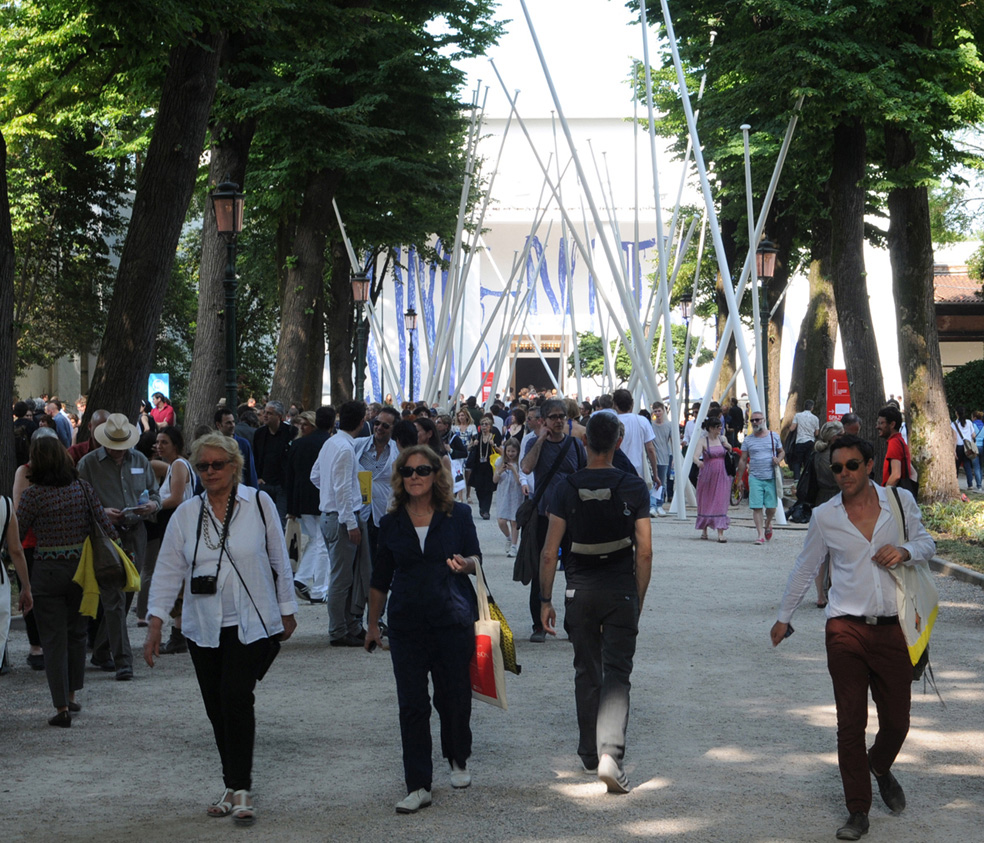
Biographical notes
Let’s talk about us /1 – Blockbuster or Betablocker: Biennale curator, museum curator
Paolo Baratta has been the President of the Biennale di Venezia since 2008, after having served a first term as president between 1998 and 2002.
Bice Curiger has been curator at the Kunsthaus in Zurich since 1993. She is the co-founder and has been the editor-in-chief of “Parkett” since 1984, and since 2004 has been the editorial director of the magazine “Tate etc” published by the Tate Gallery in London. She is the director of the 2011 Art Biennale ILLUMInations.
Germano Celant (1940) is an art critic and historian. He has been a senior curator at the Guggenheim Museum in New York since 1989 and artistic director of the Prada Foundation. He has been writing for Artforum since 1977 and for Interview since 1991. In Italy he writes for various magazines including Interni and L’Espresso. He was the director of the 47th International Art Exhibition in 2003.
Massimiliano Gioni (1973) is Associate Director and Director of Exhibitions at the New Museum of contemporary art in New York and, from 2003, Artistic Director of Trussardi Foundation in Milan. He curated the section titled La zona of the 50th International Art Exhibition – la Biennale di Venezia in 2003, the 4th Berlin Biennale and the 8th Gwangju Biennale in 2010.
Hans Ulrich Obrist (Switzerland, 1968) has been curator and co-curator, since 1991, of over two hundred international exhibitions, including the 1st Biennale in Moscow (2005), the Biennale in Lyon (2007), the China Power Station (2008, Serpentine Gallery). He co-curated the section entitled Stazione Utopia at the 50th International Art Exhibition in 2003.
Letizia Ragaglia (1969) is a curator and art historian. Since 2008 she has been the director of the new Museion in Bolzano, where she curated personal exhibitions of artists such as Monica Bonvicini, Isa Genzken, Andro Wekua and VALIE EXPORT. She is a member of the jury for the KÖR-Kunst project in Vienna. She was a member of the international jury of the 54th International Art Exhibition.
Let’s talk about us /2 – Blockbuster or Betablocker: museum curator, Biennale curator
Diana Baldon (1974) is a curator and art critic. She was recently appointed director of Index – The Swedish Contemporary Art Foundation in Stoccolm. She’s currently curating the collective exhibition Counterproduction that will open at General Foundation in Wien. Since 2002 she has co-curated many exhibitions in international institutions such as the 2nd Athens Biennale HEAVEN, A Question of Evidence at Thyssen-Bornemisza Art Contemporary in Wien and Left Pop at the Moscow Biennale in 2007. Giovanni Carmine (Switzerland, 1975), curator and art critic, is the director of the Kunst Halle Sankt Gallen in Switzerland. He was artistic organizer of ILLUMInations, the 2011 Art Biennial.
Okwui Enwezor (Nigeria, 1963) is an international curator, nominated Director of the Haus der Kunst in Munich in early 2011. He has curated many exhibitions and festivals all over the world including the Johannesburg Biennale in South Africa (1997), the Bienal Internacional de Arte Contemporaneo de Sevilla, in Spain, the Gwang-ju Biennale in South Korea (2008). He was the artistic director of Documenta 11 in Kassel, Germany, in 2002.
Beatrix Ruf (Germany, 1960) has been the director and curator of Kunsthalle Zürich since 2001. In the past she was the director and curator of Kunsthaus Glarus, and curator of the Kunstmuseum in the Canton Thurgau, Switzerland, from 1994 to 1998. Since 1995 she has also been responsible for the Ringier collection.
Vicente Todoli (Spain, 1958) was the director of the Tate Modern in London from 2002 to 2010, and from 1986 to 1996 he served as curator then Artistic Director of IVAM (Instituto Valenciano de Arte Moderno) in Spain. In 1997 he was a correspondent for the 47th International Art Exhibition curated by Germano Celant.
Let’s talk about us /3 – What have we done?!
Francesco Bonami (1955) is the Manilow Senior Curator at the Museum of Contemporary Art in Chicago, Artistic Director of the Fondazione Sandretto Re Rebaudengo (Turin) and of Pitti Immagine Discovery (Florence). He directed the 50th International Art Exhibition in 2003.
Daniel Birnbaum (Sweden, 1963), curator and art critic, is the director of the Moderna Museet in Stockholm, Sweden. He co-curated the section entitled Delays and Revolutions of the 50th International Art Exhibition in 2003. He directed the 2009 Art Biennale.
Maria de Corral (Spain, 1940) is an art critic and curator. From 1991 to 1994 she was the director of the Museo Nacional Centro de Arte Reina Sofia in Madrid. In 1988 she was the curator for the Spanish pavilion at the 43rd International Art Exhibition of la Biennale di Venezia. She was co-director of the 51st International Art Exhibition in 2005 and curator of the section entitled The Experience of Art.
Rosa Martinez (Spain, 1955) is an independent art critic and curator. From 1988 to 1992 she was the artistic director of the Biennale in Barcelona. In 1996 she was the co-curator of Manifesta 1, in Rotterdam; in 1997 she directed the 5th International Biennale of Istanbul and in 1999 the 3.SITE in Santa Fe (USA). In 2003 she was the curator of the Spanish pavilion at the 50th International Art Exhibition of the Biennale di Venezia. She was co-director of the 51st International Art Exhibition in 2005 and curator of the section Always a little further. She is currently co-curator of TRA.Edge of Becoming at the Palazzo Fortuny, Venice. Robert Storr (USA, 1950), is an American artist and critic. In 1990 he was nominated curator of the Department of Painting and Sculpture at the Museum of Modern Art in New York and through 2003 was the curator of many one-man shows, retrospectives, historical exhibitions and new installations for the permanent collection at the MoMA. In 2002 he was named Senior Curator of MoMA. He currently teaches at Yale University and writes for many international magazines including ArtPress and Frieze. He was the director of the 52nd International Art Exhibition in 2007.

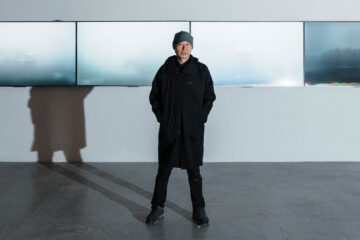
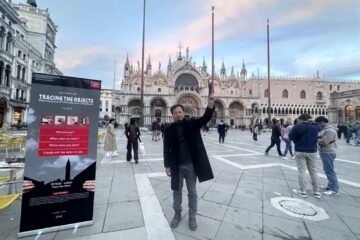
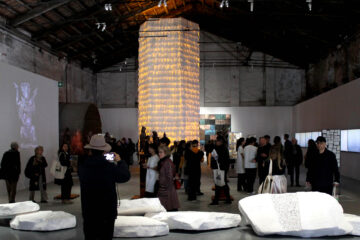
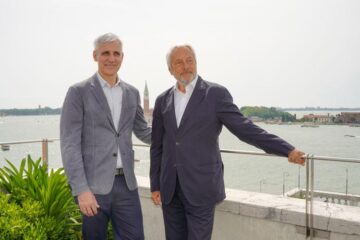

No Comment